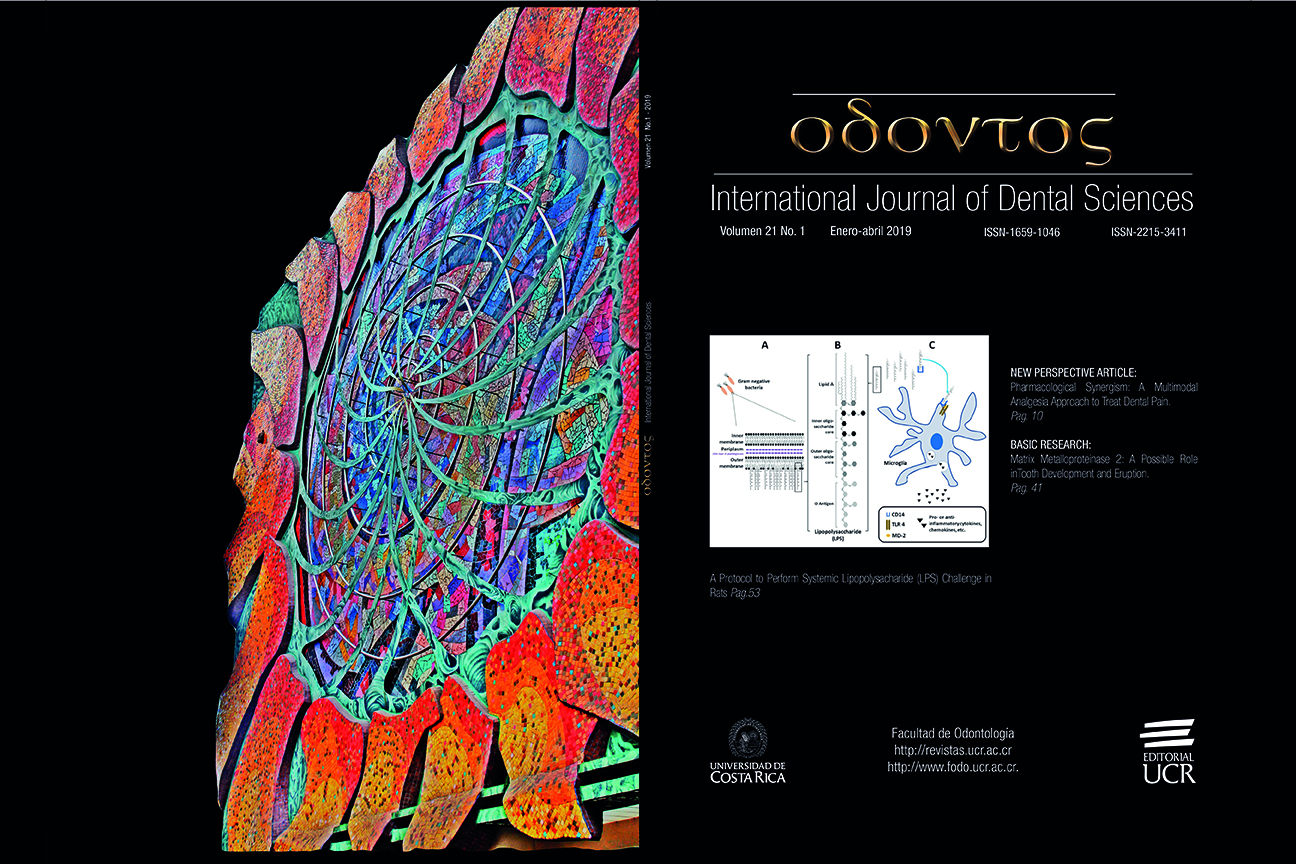Abstract
Dental pain is usually managed by clinical interventions and pharmacological coadjuvants such as NSAIDs. However, its perception and modulation is mediated by different nociceptive mechanisms and these strategies can be insufficient. The multimodal analgesia refers to the use of 2 or more analgesic drugs that attenuate or blockade different mechanisms of pain, obtaining a greater clinical effect. Within this concept, pharmacological synergism plays a leading role, combining different molecules in lower doses to diminish also side effects. Since there are no standard prescriptions to be use in all the patients, multimodal approaches allow the clinician to make responsible effective combinations, individualizing analgesia as the pathway to success.
References
Aminoshariae A., Kulild J. C., Donaldson M., Hersh E. V. Evidence-based recommendations for analgesic efficacy to treat pain of endodontic origin. J Am Dent Assoc. 2016; 147 (10): 826-839.
Jin F., Chung F. Multimodal analgesia for postoperative pain control. J Clin Anesth. 2001; 13 (7): 524-539.
Wick E. C., Grant M. C., Wu C. L. Postoperative multimodal analgesia pain management with nonopioid analgesics and techniques a review. JAMA Surg. 2017;152 (7): 691-697.
Helander E. M., Menard B. L., Harmon C. M., Homra B. K., Allain A. V., Bordelon G. J., et al. Multimodal Analgesia, Current Concepts, and Acute Pain Considerations. Curr Pain Headache Rep. 2017; 21 (1): 1-10.
Chavarria-Bolaños D., Perez-Urizar J., Grandfils C., Pozos-Guillén A. Peripheral Synergism between Tramadol and Ibuprofen in the Formalin Test. Drug Dev Res. 2014; 75 (4): 224-230.
Tallarida R. J. Drug Combinations: Tests and Analysis with Isoboles. Curr Protoc Pharmacol. 2016; 72:1-19.
Dobretsov M., Backonja M. M., Romanovsky D., Stimers J. R. Animal Models of Pain. Neuromethods. 2011; 49: 147-169.

